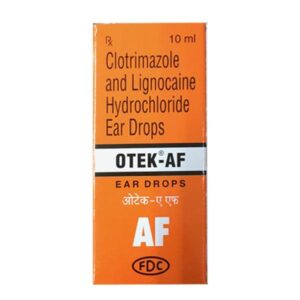PREDNISOLONE + CHLORAMPHENICOL + LIGNOCAINE
Prednisolone: Drug Name: Prednisolone
Use: Prednisolone is a corticosteroid medication used to treat a variety of conditions such as allergic disorders, skin conditions, asthma, autoimmune disorders, and certain types of cancer. It helps to reduce inflammation and suppress the immune system.
Mechanism of Action: Prednisolone works by binding to specific receptors in cells, which results in the production of certain proteins that control various immune and inflammatory responses in the body. It has potent anti-inflammatory, immunosuppressive, and anti-allergic properties.
Dose: The dose of prednisolone may vary depending on the condition being treated, the patient’s age, and other factors. It is usually taken orally as tablets or liquid. The dosing schedule and duration of treatment will be determined by the prescribing doctor. It is important to follow the prescribed dose and instructions carefully.
Side Effects: Common side effects of prednisolone include increased appetite, weight gain, difficulty sleeping, mood changes, increased blood pressure, increased blood sugar levels, and fluid retention. Long-term use or high doses may increase the risk of more severe side effects, such as osteoporosis, muscle weakness, increased vulnerability to infections, and adrenal suppression.
It is important to take prednisolone as prescribed and not to abruptly stop or change the dose without consulting a healthcare professional, as this can lead to withdrawal symptoms and worsening of the underlying condition. Regular monitoring and follow-up with a healthcare provider are necessary to manage potential side effects and monitor the effectiveness of the treatment.
Chloramphenicol: Chloramphenicol is an antibiotic drug used to treat various bacterial infections. It belongs to the class of drugs known as bacteriostatic antibiotics, which inhibit the growth and reproduction of bacteria.
The mechanism of action of chloramphenicol involves binding to the bacterial ribosome, specifically the 50S subunit, which prevents the formation of new proteins necessary for bacterial growth. This action inhibits the synthesis of essential proteins and ultimately leads to the death of the bacteria.
Chloramphenicol is commonly used in the treatment of infections caused by susceptible bacteria, such as meningitis, typhoid fever, rickettsial infections, respiratory tract infections, and certain sexually transmitted diseases. It is also effective against some gram-negative and gram-positive bacteria.
The dosage of chloramphenicol depends on the specific infection being treated, the patient’s age, and other individual factors. The drug is available in various forms, including oral capsules, tablets, and an injectable form.
Despite its effectiveness, chloramphenicol has significant side effects that limit its use. The most serious potential side effect is the suppression of bone marrow function, which can lead to a decrease in red and white blood cell counts as well as platelets. This can result in anemia, increased susceptibility to infections, and an increased risk of bleeding.
Other side effects of chloramphenicol include nausea, vomiting, diarrhea, headache, dizziness, skin rashes, and allergic reactions. It may also cause a condition called grey baby syndrome, especially in newborns, characterized by abdominal distension, cyanosis, and cardiovascular collapse.
Due to its potential side effects, chloramphenicol is typically reserved for cases where other antibiotics are ineffective or contraindicated. It should be used with caution and under medical supervision to minimize the risk of serious adverse reactions.
Lignocaine: Lignocaine, also known as lidocaine, is a local anesthetic drug commonly used to numb tissues in a specific area of the body to relieve pain or discomfort. It belongs to the amide group of local anesthetics.
The mechanism of action of lignocaine involves blocking the transmission of pain signals from the nerves to the brain. It works by binding to and inhibiting voltage-gated sodium channels in the neurons, preventing the influx of sodium ions and thereby blocking the generation and conduction of nerve impulses. This action effectively numbs the area, providing temporary relief from pain.
Lignocaine can be administered in various forms, including creams, ointments, gels, injections, and patches. The appropriate dose and administration method may vary depending on the specific condition being treated and the individual patient. It is important to follow the instructions provided by a healthcare professional or the product label.
The use of lignocaine may be associated with a few common side effects, including temporary numbness or tingling at the application site, skin irritation or redness, and a burning or stinging sensation. In rare cases, systemic side effects may occur, such as dizziness, lightheadedness, slowed or irregular heart rate, or allergic reactions. It is important to seek immediate medical attention if any severe or allergic reactions are experienced.
Lignocaine should not be used in patients with a known allergy to local anesthetics of the amide type, or in individuals with certain heart conditions or an abnormal heart rhythm. It is always advisable to consult a healthcare professional before using lignocaine, especially for individuals with any existing medical conditions or those taking other medications.

